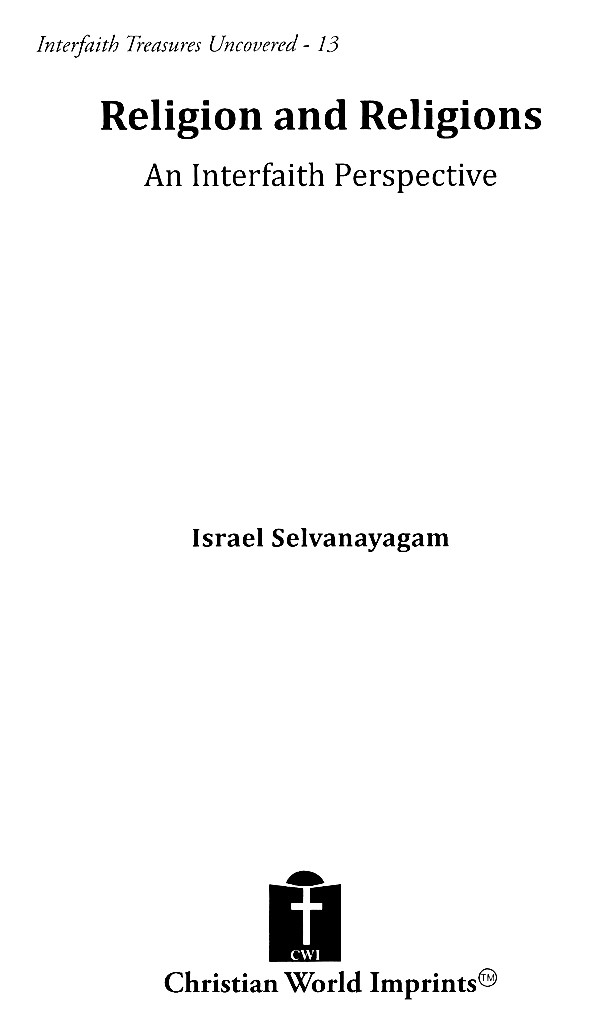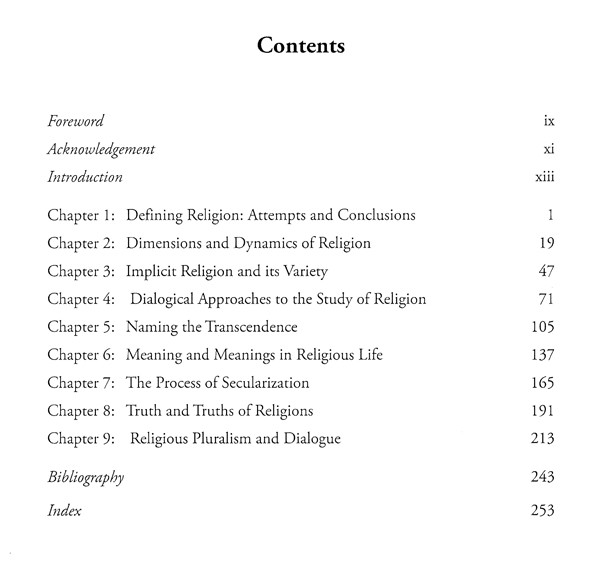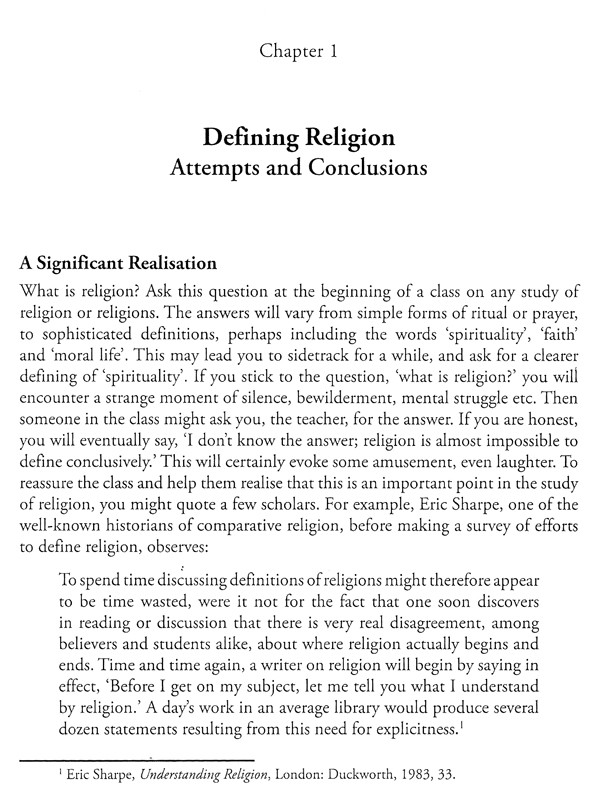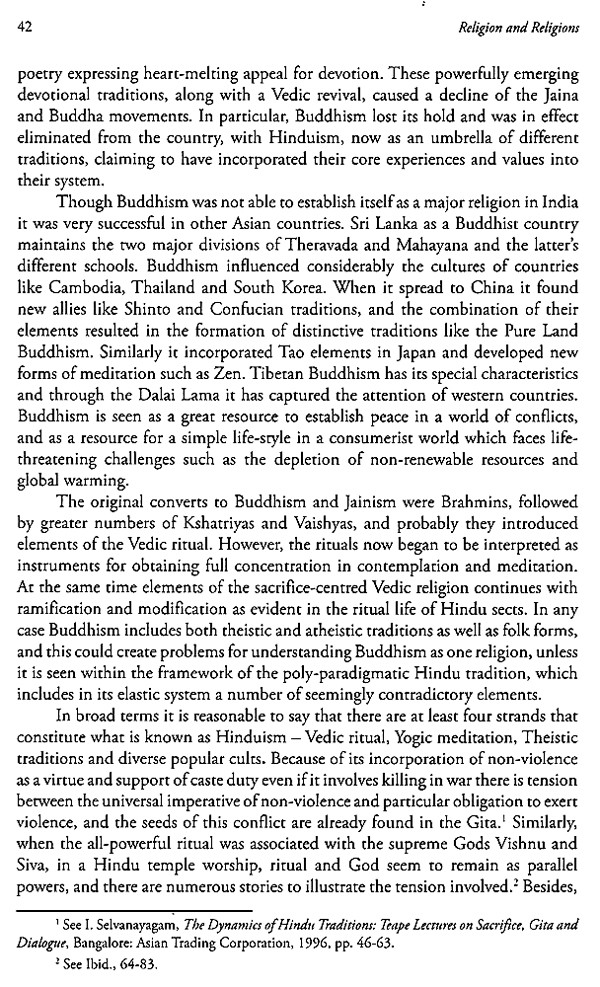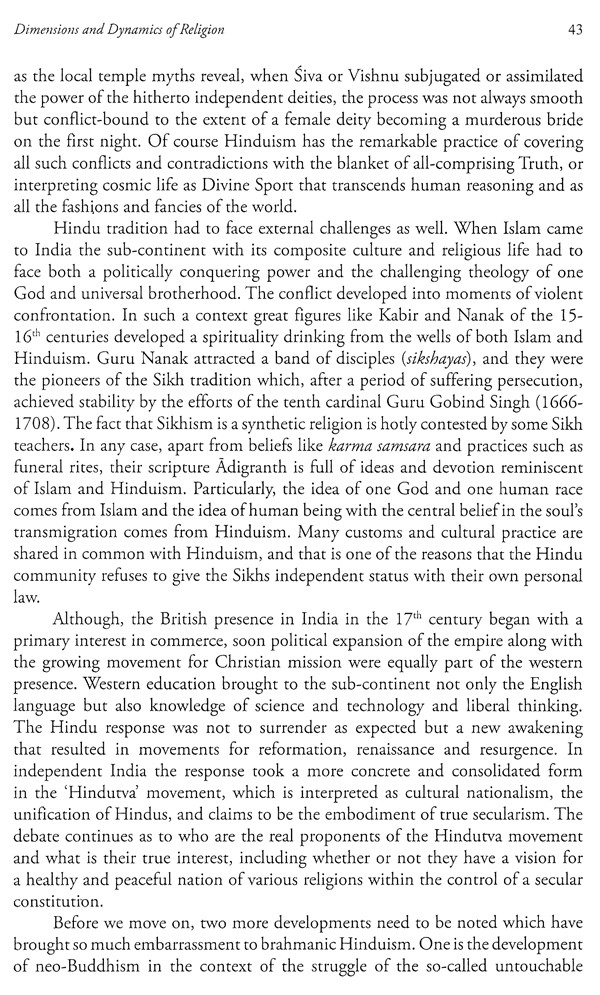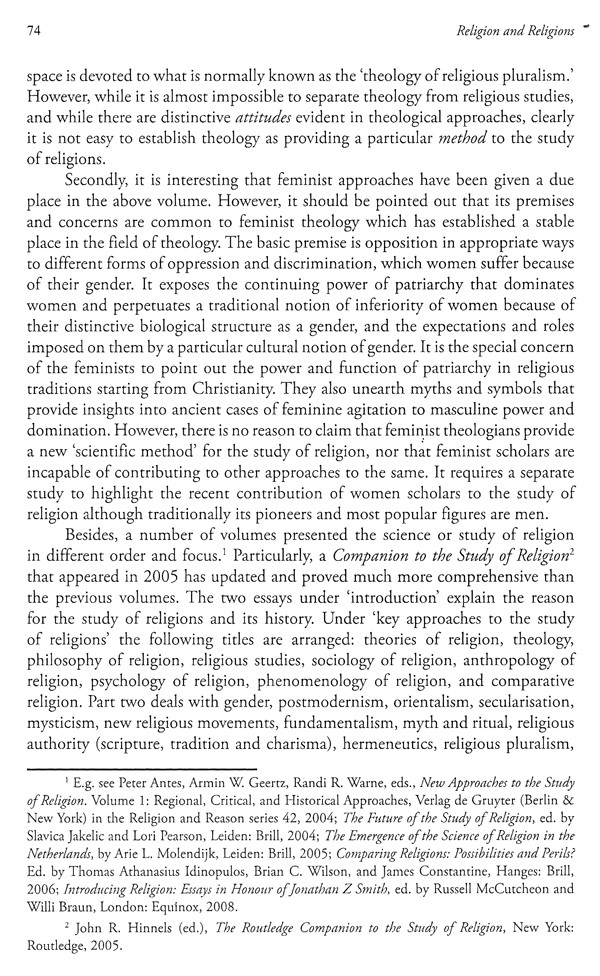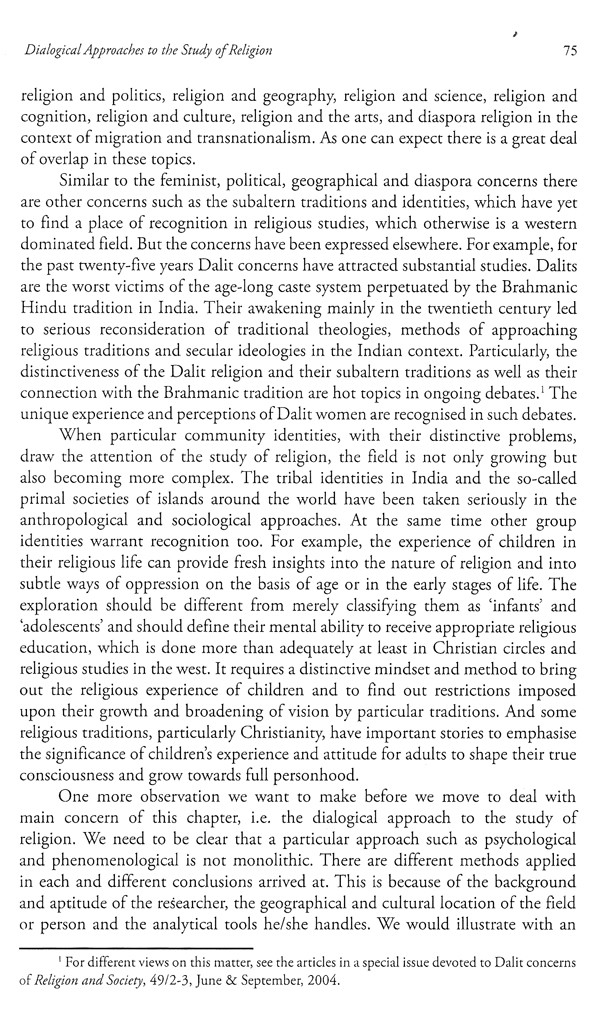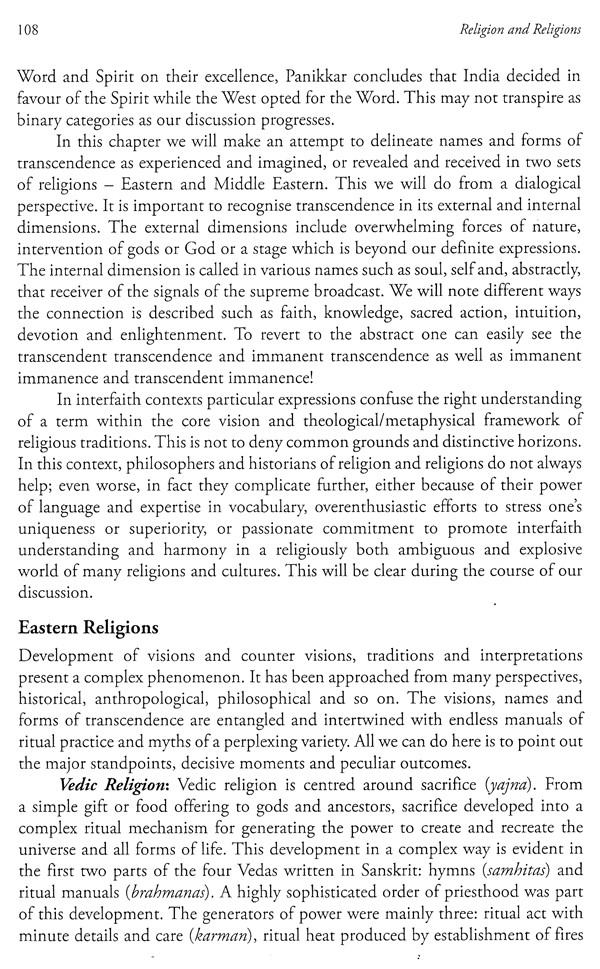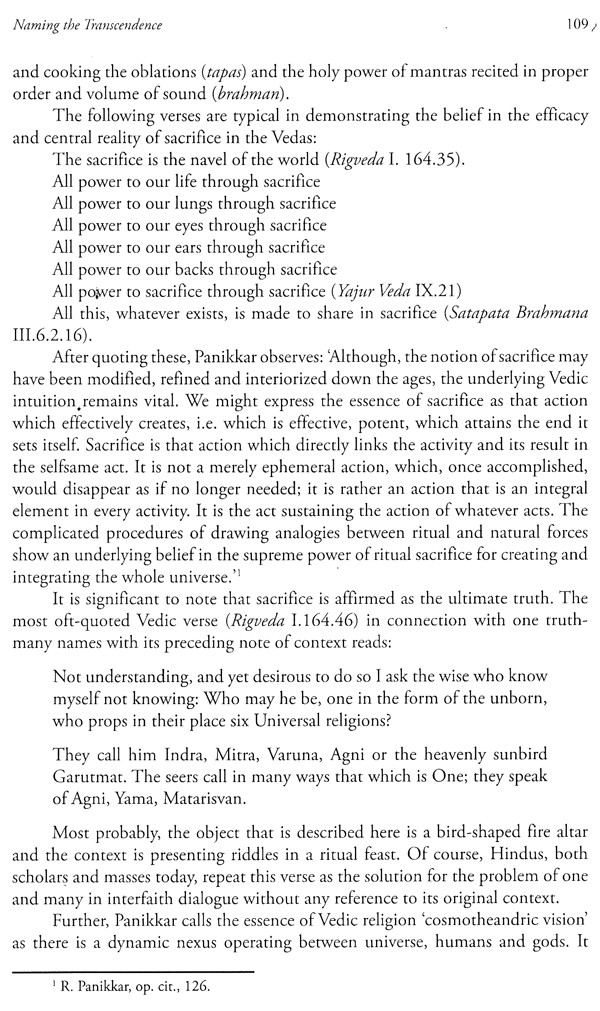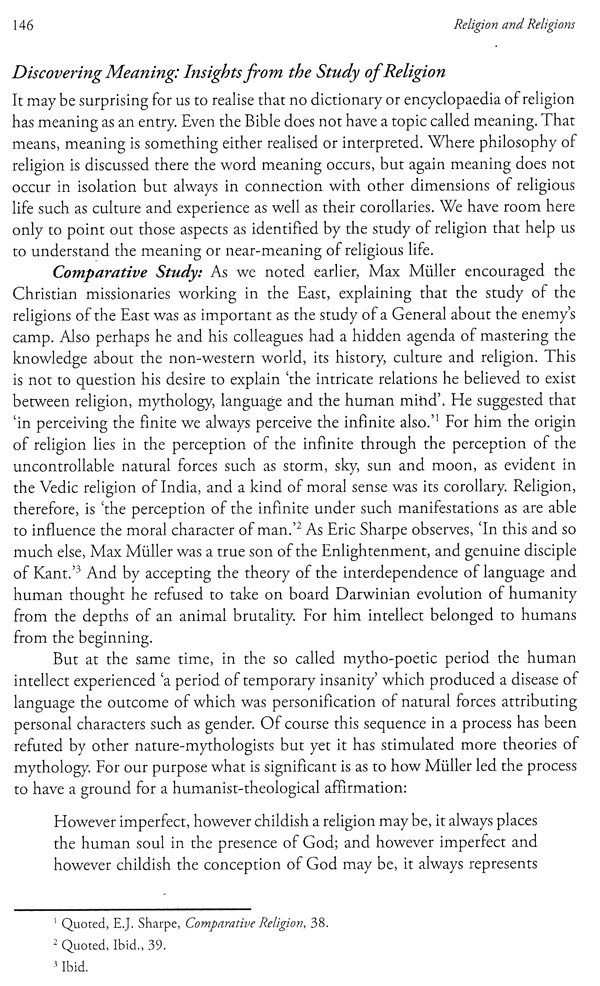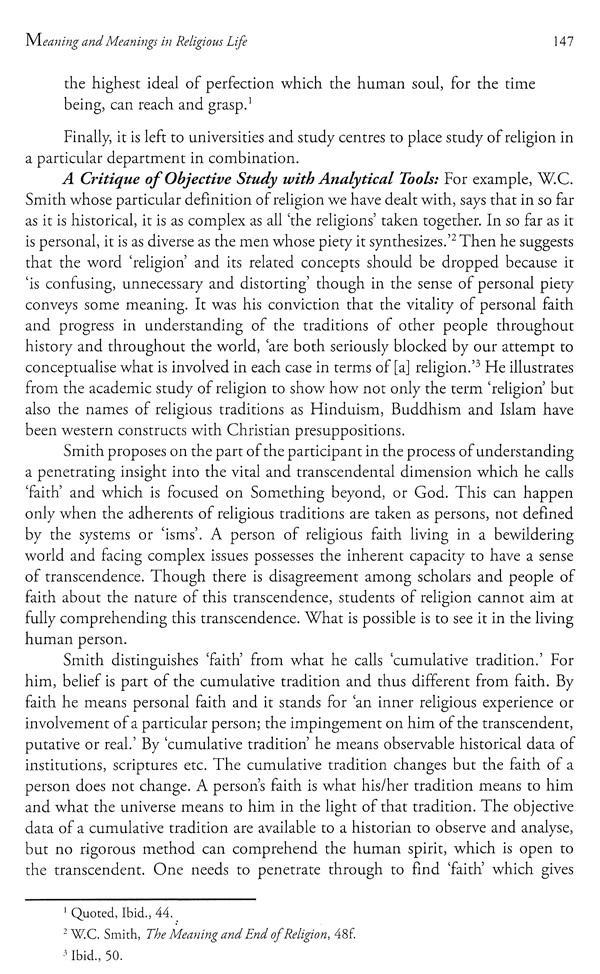
Religion and Religions: An Interfaith Perspective
Book Specification
| Item Code: | UAZ459 |
| Author: | Israel Selvanayagam |
| Publisher: | Christian World Imprints, Delhi |
| Language: | English |
| Edition: | 2018 |
| ISBN: | 9789351482697 |
| Pages: | 279 |
| Cover: | HARDCOVER |
| Other Details | 9.50 X 6.50 inch |
| Weight | 630 gm |
Book Description
It is observed from history and contemporary society that humans are religious animals or spiritual creatures. But the complexity and variety of religious life have made even the most sophisticated studies wanting. Identification of different dimensions of religious life has helped but its enumeration and analysis remain inconclusive. The recognition and study of a new variety such as quasi religion and implicit religion calls for exploring newer forms with rigour and openness. Abstract terms such as transcendence, meaning and truth require unpacking with reference to visions, traditions and experiences. Genuine and authentic study of religion cannot be confined to departments of universities and research Here is an attempt of someone with long experience of study and to integrate scholarly study with interfaith dialogue, which is fascinating and stimulating
Dr. Israel Selvanayagam has taught religions with reflexive praxis of interfaith dialogue at Tamilnadu Theological Seminary, Madurai; United Theological College, Bangalore; Gurukul Theological College and Research Institute, Chennai and at least four colleges in the West. Currently he is with the Methodist Church in Britain. He has published extensively both in Tamil and English. His most recent books published by CWI are Kristu Bhakti and Krishna Bhakti: A Christian-Hindu Dialogue Contributing to Comparative Theology (2017) and (ed.) Religion, Spirituality & Secularity in Multi-Religious India: Visions and Experiments (2017).
I am indeed honoured and pleased to write this foreword to the very insightful and meaningful book produced by Dr. Israel Selvanayagam. In this book, he brings together his life's work of both scholarly and personal journey in understanding the issues of religion/s and their study by both theologians and historians of religions. First, the value of the book lies in the fact that he unpacks carefully the methodological and theoretical issues in dealing with religions of the world, but also very significantly he engages the definition of religion by locating it in the lives of people rather than in the abstract philosophical debates. Secondly, he writes with the intention of exposing the western study and engagement with religion to the non-western context, such as India and in doing so, he teases out the difficulties in ignoring the non-western discourses on religion. By offering comprehensive reviews of relevant literature in each chapter, Dr. Selvanayagam offers useful guidelines to readers for further investigation and research. He combines his strong roots in Christian theology with the study of religion comparatively by focusing on how religious ideas such as God and soul in different religions may be comparable, albeit he limits his analysis to the Abrahamic and Indian religions. As a theologian, he is committed to questions of meaning, interfaith dialogue, justice and peace. These issues are discussed pervasively in the book. He makes clear of his intention to push for the study of religion centred around people's daily experience rather than relying solely on religious texts. The key significance of this book is that here Dr. Selvanayagam reflects closely from his Indian experience, especially on issues of secularism, pluralism and dialogue, thereby filling the gap in scholarship that is mostly from a western perspective. In his discussion on the question of religious 'truth' drawing from the earlier Indian and western Christian theologians, he locates it in the concrete realities of the world where issues of caste, poverty and inequality matter, moving away from the abstract discussions of philosophers and theologians. He has offered relevant and useful guidelines in the discussion on inter-religious dialogue by emphasising on religious commitment and willingness to learn from others and openness to accept differences. The book is a very useful contribution to both students of theology and religious studies who are interested in the broader questions of inter-religious relations. He writes with a sense of purpose and advocacy that does not at the same time compromise rational discussion. He expresses his view candidly and gracefully. I strongly recommend this book to scholars and researchers who are in their quest to understand the Indian Christian context on issues of pluralism, conversion, and dialogue.
'Now I am tasting a slice of mango; I only know its taste; so also the taste of God in Christ. Likewise you can taste God. There is no surety without tasting it!' As a teenager I heard this from a Christian preacher in my local congregation. Many questions arose in my mind. For example, why he could not share a slice of mango with every one of that poor congregation? My southern Indian village is known for a variety of mangoes; some are sweet while some others are sweeter; some are sour while some others are sweet and sour! In all cases the taste depends on the ripeness of the fruit. In religious terms, while some Christians claim to be in the sweet presence of Christ always, in practice others find them too sour. But at the same time, in that multifaith village there were exceptional individuals from other faiths who were known to be sweet. Were they deceptive and pretending to be sweet as some Christian enthusiasts claimed? This justified their preaching the gospel to the non-Christians. This is enough for a start!
After teaching and coordinating a new programme of interfaith dialogue at the Tamilnadu Theological Seminary in Madurai (a famous temple town in southern India) for four years, I joined the United Theological College in Bangalore in 1981 to do my Masters in the field of Religions with a special focus on 'Methods in the Study of Religion' was a required course. Herbert Jaisingh, an Indian who had lived in Chicago for several years, was the teacher of this What was obvious was that he depended completely on books produced in the English language. He took pains to explain certain terms used in different approaches to the study of religion. We did not fail to notice that the term 'methodology' was the most frequent yet the most ambiguous word to grapple. The reason was that different writers used it in different senses. However, such factors could not dampen my interest in the study of religion.
in 1996 when I moved to England to teach religions and guide interfaith exposure at various institutions I started reading more and watching the way the study of religion was done there. It was striking that the study of religion itself is known by different terms, the most common ones being science of religion, scientific study of religion, history of religion, comparative religion, phenomenology of religion, religious studies and interfaith studies.
**Contents and Sample Pages**
